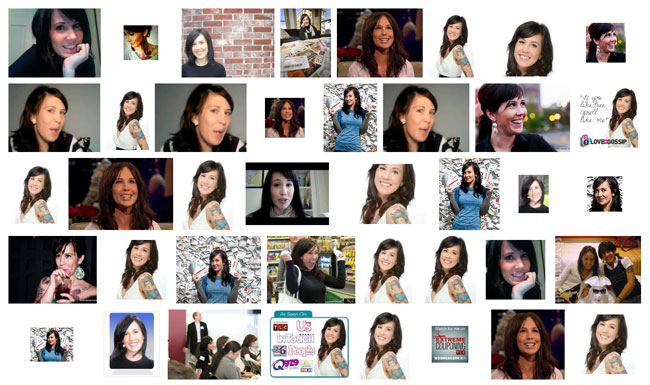
Last year I wrote about the importance of copyright registration. Recently this practice helped me both protect against—and collect for—unauthorized use.
Last spring, I photographed local celebrity and Extreme Couponer Chrystie Corns. For those who don’t know, Chrystie is the sister of Ashley Hebert, this past season’s star of the Bachelorette reality tv show. As her outspoken sister, Chrystie was featured prominently on the season finale. I’ve photographed Chrystie a couple of times now and she’s been nothing but gracious and kind.
The morning after the show’s airing, I noticed huge spikes in traffic on my blog post on Chrystie. I started doing some Google searches and came up with several sites—including prominent news sites—using my photo of Chrystie without permission and minus my watermark (clearly visible in my published photo) cropped out. This is a clear violation of my copyright, the terms on my site and was done without my or Chrystie’s knowledge or consent.
So, what’s a photographer to do? It may be enough to contact violators and letting them know that you are the copyright holder. It has a lot more weight behind it if you’ve actually registered your images with the US Copyright Office and gotten proof (the registration certificate) back in the mail. Coincidentally, I got this certificate just three days before the final Bachelorette aired (though I had registered the images months before, it took a while for the request to process).
Photographers can collect only actual damages (hard to assess, but certainly not amounting to much in the age of digital) for a proven copyright infringement. If the image is officially registered, statutory damages up to $150,000 may be awarded. That’s the kind of consequence that gets people to stand up and pay attention.
Another helpful—make that necessary thing—is a well-crafted cease-and-desist letter, written by an attorney. I have one that I use in such cases as the first salvo. The second, if necessary, comes directly from my lawyer.
In this case, it took me more than two weeks to chase down and get responses back from all the infringers (there are also legitimate users, approved by Chrystie and allowed based on our license agreement). In the end, I got immediate take-downs in all cases and an agreement to pay from one site that turned out to be the place many of the others got my photo from. They are also the ones who cropped my watermark out, incidentally.
Some people may ask why I as a photographer care, or wonder if it’s about making more money for the photographer. I answer that my primary purpose isn’t to get abusers to pay, it’s to stop the infringement, both to protect my copyright and my client (the subject of my photos). I will invoice them if they’ve already gotten use out of the image for which they’d normally have to pay but I won’t press the issue usually if they respond quickly and decisively to my notification.
A side note: I got one polite response from a news site apologizing for their use, and stating that they take copyright violation ‘very seriously’. They mentioned that they had done a Google images search and that the license indicated it was a royalty free image. I’ll take them at their word that they are apologetic, but when I searched on Google Images filtering only for “free” images, my image did not come up.
For added protection and tracking of my images, I’m currently in the process of incorporating the Plus registry into my workflow.
So, even if you shoot subject matter that you may not think will require the level of protection needed and afforded by us copyright registration, it’s worthwhile to prepare yourself now before you’re tested.
Know your rights, and register, register, register. It’ll be the best $35 you ever spent.
[photoshelter-img width=’250′ height=’400′ i_id=’I0000eSeUn8UIvxs’ buy=’0′]
